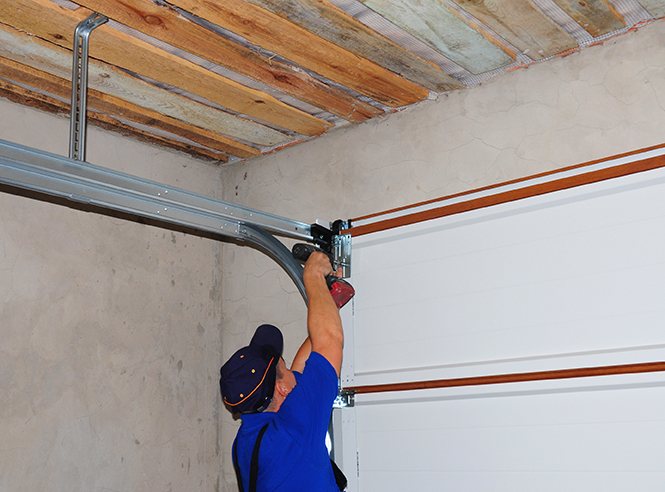Usual Garage Door Issues and Just How to Take care of Them
Garage doors are crucial for both protection and convenience, yet they typically present a selection of usual concerns that can discourage homeowners. While some issues may appear uncomplicated to resolve, others may call for a much more nuanced understanding of garage door technicians.
Noisy Garage Door Procedure
A loud garage door operation can be a substantial source of annoyance for home owners, usually showing underlying mechanical problems. Such disturbances might come from various reasons, including worn-out rollers, loosened hardware, or not enough lubrication. Identifying the resource of the noise is important for reliable resolution.
One common reason for extreme noise is the presence of corroded or damaged rollers. Over time, these elements can deteriorate, resulting in grinding or squealing audios as the door steps. Regular examination and replacement of these rollers can significantly lower sound degrees. In addition, loosened bolts or screws in the door mechanism can create rattling audios throughout procedure. Tightening up these bolts makes sure an extra secure and quieter motion.
An additional contributing variable is poor lubrication of the door's relocating components. Using a high-quality lube to the tracks, springtimes, and rollers can substantially decrease friction and sound. House owners should do this upkeep regularly to maintain optimal efficiency.
Lastly, the garage door opener might likewise produce sound due to its age or mechanical concerns. If the noise persists regardless of addressing various other factors, consulting an expert for an extensive inspection and potential fixing may be required.
Door Won't Open or Close
Experiencing a garage door that will not open or close can be exceptionally frustrating and often signifies a malfunction within the system. A number of factors can add to this issue, and identifying the source is essential for efficient resolution.

Following, examine the safety sensing units located at the base of the door. These sensing units can become misaligned or blocked by debris, stopping the door from running correctly. Clean the sensors with a soft fabric and guarantee they are straightened.
Furthermore, the garage door's interior components ought to be reviewed. Issues such as a broken spring, worn-out rollers, or a harmed opener can hamper activity. If any kind of components seem damaged, it may be a good idea to get in touch with an expert for fixings.
Misaligned Tracks
(Superior Quality)Misaligned tracks can seriously interrupt the smooth operation of a garage door, leading to functional failures such as irregular activity or full immobilization. This concern usually emerges due to a variety of aspects, consisting of wear and tear, unintended influences, or incorrect installation. When the tracks are misaligned, the rollers can not relocate freely, which not just stresses the motor yet additionally poses safety and security dangers.
To identify imbalance, aesthetically evaluate the tracks for spaces or irregular spacing. If you discover any type of discrepancies, it is crucial to deal with the problem quickly - garage door service. Begin by loosening the screws that secure the track to the wall, enabling adjustments. Very carefully tap the track back into its correct placement using a rubber mallet or a comparable device, ensuring it is straight and degree.
Regular maintenance, consisting of cleaning up the tracks and ensuring rollers are in great problem, can prevent future imbalances. By addressing misaligned tracks without delay, you can restore the functionality of your garage door and boost its durability.
Broken Springs
Among the various components of a garage door system, busted springs are one of the most usual problems that can substantially hinder its functionality. Garage door springs are crucial for balancing the weight of the door, permitting smooth opening and closing. When a spring breaks, it can cause a door that is tough to operate or, sometimes, totally inoperable.
There are 2 main sorts of springs: torsion springtimes, which are placed above the door, and expansion springs, located on either side. Indications of a broken springtime include a door that will not open up, a noticeable space in the springtime, or a loud sound throughout operation. Trying to operate a garage door with a busted spring can trigger more damages to the door or the opener.
Repairing busted springs is not a do it yourself task; it calls for specialized devices and experience as a result of the high stress involved. It is a good idea to consult a professional technician that can safely replace the springs and guarantee the door is correctly balanced. Regular maintenance and assessments can aid prevent spring failures and prolong the life expectancy of the garage door system.
Push-button Control Issues

If the remote still falls short to run, inspect the garage door opener to make certain that its sensors are tidy and unobstructed. Dirt, particles, or misalignment may hinder the signal transmission between the remote and the opener.
Disturbance from various other electronic devices can likewise restrain remote functionality. Make sure that neighboring gadgets, such as cordless routers or cordless phones, are not causing disruptions. garage door Professional Approach service. If disturbance is suspected, try relocating these gadgets additionally far from the garage door opener
In some cases, the remote might require to be reprogrammed. Consult the maker's standards to reset the remote control and integrate it with the garage door opener. If all else stops working and the remote remains to malfunction, take into consideration seeking advice from a specialist specialist for a detailed assessment and possible substitute of the remote or opener.
Final Thought
(Effortless Process)In summary, common garage door problems can dramatically impact functionality and safety. Proactive upkeep and timely repair work can make certain optimum performance and longevity of garage doors.